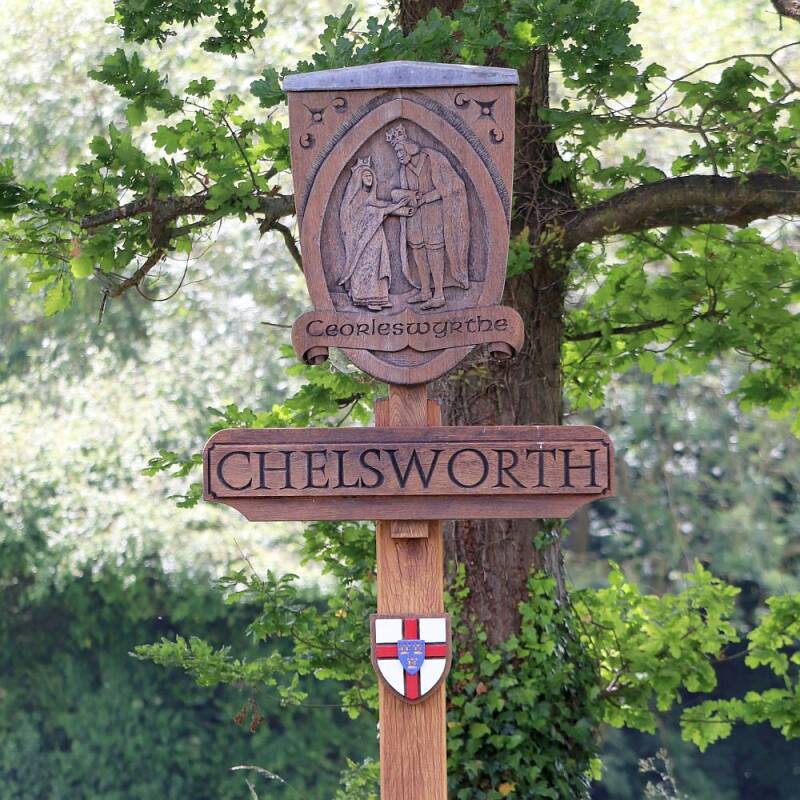Chelsworth
The Sign
The sign was made by P.E. Mason and erected in 2001 to celebrate the Millennium.
The main theme of the sign depicts King Edgar giving the village to Aethelflaed, his stepmother, in AD962. Edgar's Latin charter (Suffolk's oldest) names the village as Ceorleswyrthe. The boundaries of the parish then are still the same now.
The coat of arms on the post are a combination of St George's Cross of England, with a shield bearing three golden crowns on a blue background, the arms ascribed by medieval heralds to the Anglo Saxon Kingdom of East Anglia and the Wuffingas dynasty (The Wolf Kings of East Anglia).
The Name and Population
It was called Ceorleswrythe in 962, Caeorlesweorth from 962 to 991, Ceorlesweorth from 1000-1002 and Cerleswrda in 1086. It means "The enclosure or enclosed farmstead of the freeman or of a man called Ceorl", from Old English. The population was 206 at the 2011 census.
Other Points of Interest
Built on the north bank of the River Brett, the entire village is classified as a conservation area, and contains numerous listed buildings.
The manor anciently belonged to the Howards, and afterwards to the family of De Vere. In 1737 it became, by purchase, the property of Robert Pocklington Esq., who erected Chelsworth House. Chelsworth House is situated 330 yards further south from the bridge and Chelsworth Park and Common further out still. A narrow hump-backed bridge to the south, part of which dates from 1754, crosses the river.
All Saints', the present church building in the west of the village, is mainly 14th and 15th century and is completely cement rendered.
